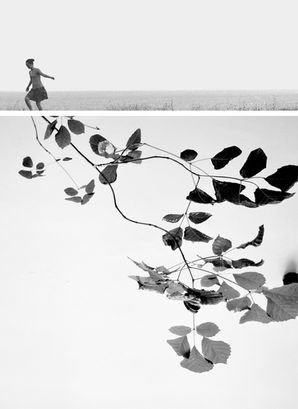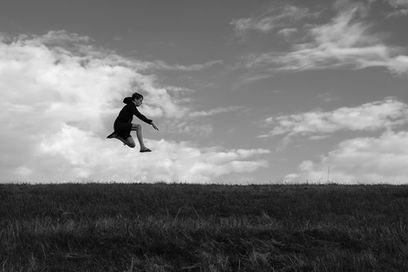
DAYTIME ST. PAULI
September 30, 2022
INTERVIEW
PHOTOGRAPHY Mirko Karsch
INTERVIEW Melanie Meggs
St. Pauli is incredibly multifaceted and is especially known for its nightlife. You can find here an immense number of bars, pubs, restaurants and clubs. But St. Pauli is also known for its red light district and there are problems with violent disputes from time to time. The district is also interesting because it is located directly on one of the largest seaports in the world, and this fact still characterises what St. Pauli is today.
But what does it look like during the day when the night owls have disappeared? Are the pubs empty then? Who lives in St.Pauli? What does the true soul of the district look like? Sometimes life in St. Pauli seems like a cycle to me: In the evening the tourists come, at night the Hamburg nighthawks, and when the trash is pushed aside in the morning, the neighborhood belongs to its residents again until the next evening.
Since the 90s, I have been on the streets of St. Pauli again and again. Deviating from the usual customs, I liked to stay here even during the day. Looking back, I'm not sure it was wise to spend so much time in pinball arcades, but this place has an inexplicable attraction for me.
Endless possibilities - even during the day.
The people I meet during the day, young and old, have an alternative lifestyle, others seem to have none at all. There are pubs and bars that never seemed to close. Some play hard techno sound, others shanties. In the Summer there are open-air festivals and art projects. There is a huge event area here where folk fairs take place and a large soccer stadium for a professional team is located right next door. And above all this watches a bunker from the Second World War.
But this is also where normal life takes place. Children are taken to school, postmen deliver the mail, suppliers deliver to pubs and the laundry is washed in laundromats. St. Pauli is also home to two churches, who care about the well-being of the people of St. Pauli. St. Joseph-Kirche is located in one of the noisiest and wildest streets of the district, which represents a bizarre contrast. The other church, St. Pauli Kirche, is located between the entertainment district and the port. The park-like property is open to all residents. They like to use it - even just to play a game of ball and enjoy a cold beer.
How much change is healthy?
Of course, gentrification has not stopped at St. Pauli and many cherished things have disappeared. In order to understand this, you have to know that historically St. Pauli was a part of the city where mainly the working class and low-income groups settled. This is still noticeable today, but due to the aforementioned displacement through gentrification, fewer and fewer of the resident population can afford to live in St. Pauli. But the changes on st. Pauli also show themselves in other ways. The local beer "Astra" is no longer brewed here and the commercial sprees seem to be scaling ever new heights, especially in the evenings. On the other hand, people were already grumbling about the new entertainment formats in the 90s. Change is part of the big city. Not only in Hamburg.
And the fact that a district is developing is not necessarily negative. An example of this is the public park 'Park Fiction', where young people especially like to spend their free time. Here is played a lot of basketball or it is the lawn just enjoy the view of the harbour.
What has remained are many beautiful things, such as the harbor panorama, which I will probably never get tired of. St. Pauli is still the place that attracts many young people. New things are constantly being created. The district never seems to sleep. It is a lot of fun to stroll through St. Pauli during the day. Everything is unstressed and the observations are quite different than at night.

“Since the 90s, I have been on the streets of St. Pauli again and again. Deviating from the usual customs, I liked to stay here even during the day. Looking back, I'm not sure it was wise to spend so much time in pinball arcades, but this place has an inexplicable attraction for me.”
IN CONVERSATION WITH MIRKO KARSCH
From the point of view of Berlin photographer Mirko Karsch, street photography is a contribution to the debate on the documentation of contemporary forms of life in the psychological, ecological and architectural sense. The urban city is both a stage and an object of social conflict, and ultimately a result of social processes.
We had the pleasure of interviewing Mirko for The Pictorial List, observing and seeing the potential in whatever has been put in front of him. Lucky enough to photograph regionally and worldwide Mirko shares with you his journey and inspiration.
TPL: Mirko please tell us about yourself. How does where you are from influence your work?
MK: I originally come from Hamburg and grew up there sheltered. That was quickly too narrow for me and was the reason why I looked for things that deviated from what I found at home. Later I moved to Frankfurt and Madrid. Since a few years ago I live in Berlin. So I've been around a lot in Europe. The interest in new and different things, is of course also reflected in the photography. I like to try out new things.
TPL: What drew you to photography? What was that moment that you decided to pick up a camera? Talk to us about your photographic experience in New York in the 1990s and how that mapped your photographic journey to who you are today.
MK: I got my first camera as a confirmation gift. I think a camera was a kind of status symbol back then, like a cell phone is today. I took my first serious photos in New York without giving it much thought. I simply photographed what I liked in automatic mode. That was film photography, of course, and it wasn't until much later in Hamburg that I realized that I liked both the pictures and the style incredibly well. And so I began to consciously pursue street photography.
TPL: How and why did this project first manifest for you? What was the inspiration?
MK: I have known St. Pauli since the 90s and have always been attracted to the district. Even then I was often on the road during the day in St. Pauli and was fascinated by the people who live and work there and the many opportunities they have. I don't think many people understand that St. Pauli is of course also a completely normal place where children go to school, people buy bread and the churches invite people to prayer on Sundays. In addition, I was naturally interested in the contrasts with the "night shift". Actually, St. Pauli exists twice. It wasn't until much later that I came up with the idea of documenting everything photographically.
TPL: Talk to us about your method of working and experimentation during the project. What was a daily itinerary for you? Is the project ongoing?
MK: I know St. Pauli very well, but I did research beforehand and looked for spots that I found relevant and interesting. Otherwise, I was the typical flaneur, wandering the streets looking for suitable locations. I plan to keep this project going for a while, as I am sure that St. Pauli has much more to offer. There is no final date.
TPL: Finally, what do you want people to take away from this project? What do you want them to be asking themselves or to think about?
MK: I would like to encourage people to observe things a little more intensively and to look behind the scenes. It is also incredibly important to talk to the local people. So doors open and you get a feeling for the people and their way of thinking and living.
I plan to keep this project going for a while, as I am sure that St. Pauli has much more to offer. There is no final date.

TPL: Do you have any favourite artists or photographers you would like to share with us, and the reason for their significance?
MK: I consider Harvey Stein to be an excellent photographer. I find his long-term series, which span up to 50 years, very inspiring. Ian Howorth is in my eyes an excellent exponent of the cinematic photography genre. Finally, I appreciate Alec Soth for his great documentary work.
TPL: If you could just choose one photographer to shoot alongside for a day...who would you choose? And why?
MK: I would love to spend a day with Alec Soth. He has published excellent photography books in the last few years and I really appreciate his photographic style. I am sure I can learn a lot from him.
TPL: What is it that you love most about street photography?
MK: Street photography is diverse and has more to offer than the decisive moment. It has a documentary character about it and shows everyday life. Street photos preserve the present for future generations. In that sense, street photos have a lot in common with wine: they get better and better over the years.
TPL: What was the first camera you ever held in your hand, brought to eye, and released a shutter on? What is the camera you use now? Does the equipment you use help you in achieving your vision in your photography? What is on your wishlist?
MK: My first camera was the Yashica AF 200 and I'm glad I still have it and use it from time to time. It's amazing how much image quality is in such old cameras. Nowadays I mainly use the Nikon D7500 as an all-round camera and the Lumix LX100 II for street photography. The Nikon allows me to use all angles thanks to the F-mount. In addition, the image resolutions are excellent even at night. With the Lumix, I can go where I would stand out or be disturbed with the big Nikon. Since I'm completely satisfied, I'm not planning a new purchase at the moment.
TPL: What are some of your goals as a photographer? What direction do you think you will take your photography? Where do you hope to see yourself in five years?
MK: I have noticed that I am moving more and more away from pure street photography towards documentary photography. This fits very well with my next project: A documentary about the Berlin skateboard scene. Maybe there will be an exhibition in 5 years (or sooner).
TPL: “When I am not out photographing, I (like to)…
MK: Spend time with the kids. And skateboarding of course!”









































